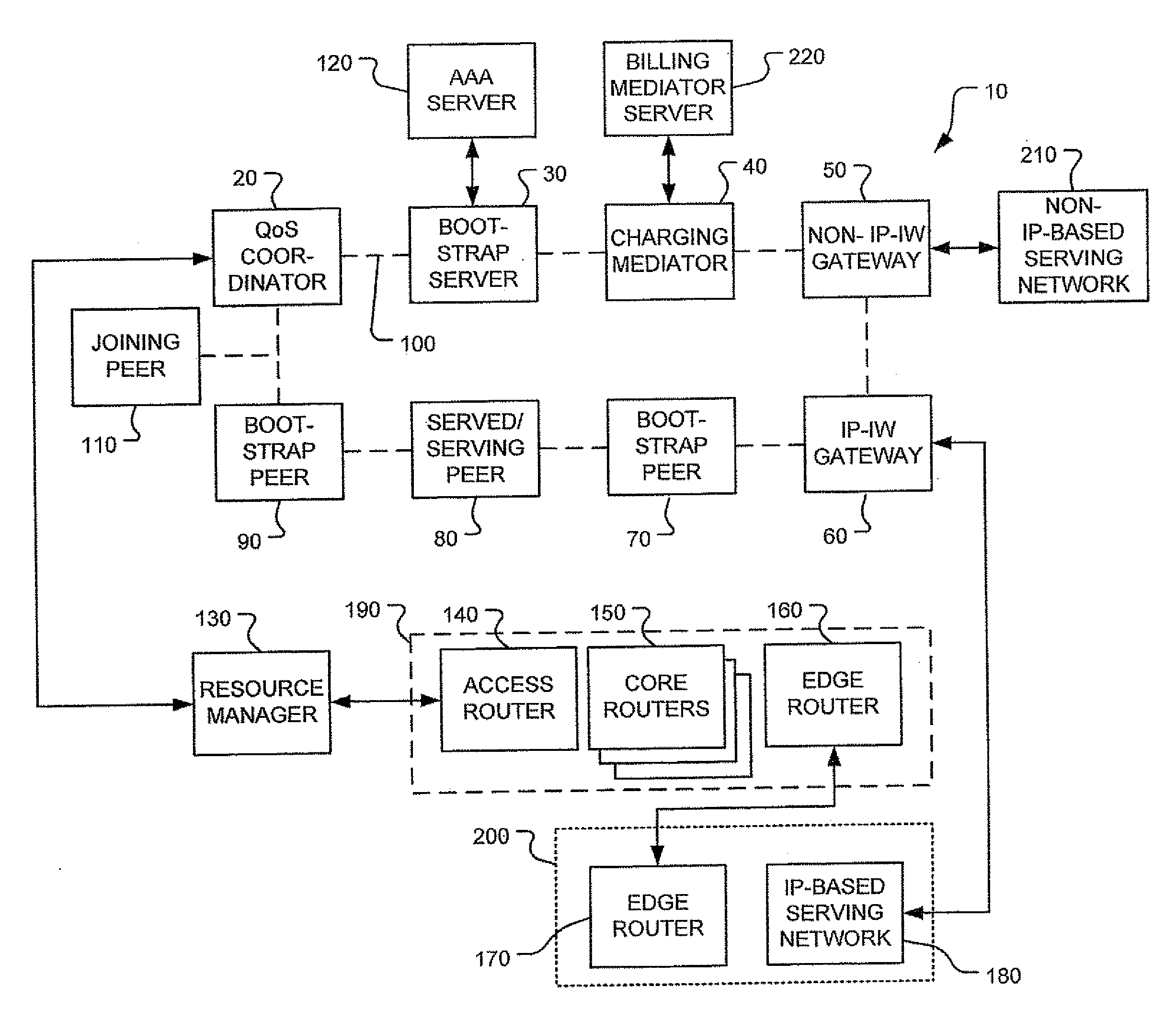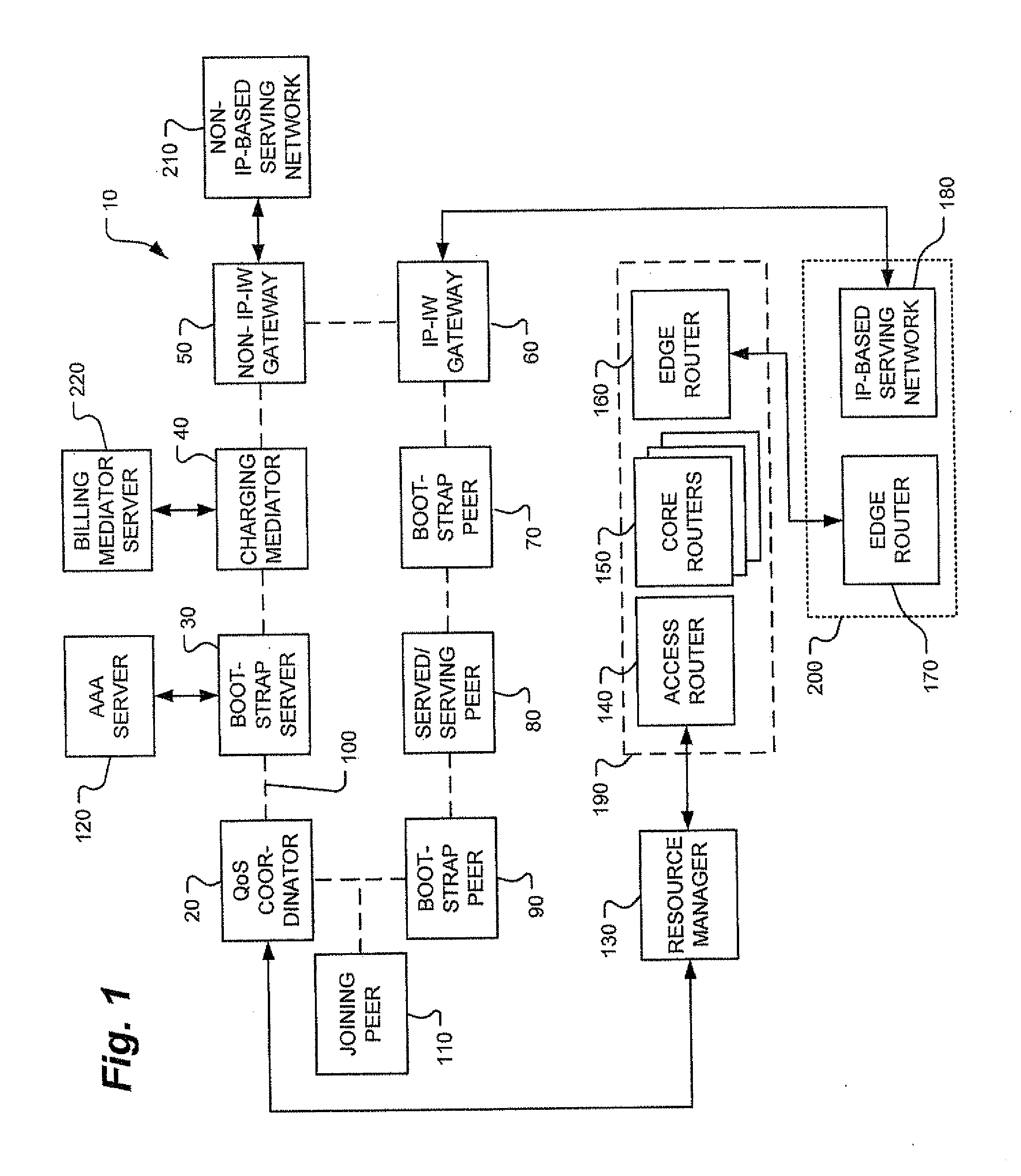Carrier-grade peer-to-peer (P2P) network, system and method
a peer-to-peer network and carrier-grade technology, applied in the field of carrier-grade peer-to-peer network, can solve the problems of network management, increased capital and operating expenditure, and revenue loss, and achieve the effect of enhancing cooperation
- Summary
- Abstract
- Description
- Claims
- Application Information
AI Technical Summary
Benefits of technology
Problems solved by technology
Method used
Image
Examples
Embodiment Construction
[0011]It is to be understood the figures and descriptions of the preferred embodiments of the present invention have been simplified to illustrate elements that are relevant for a clear understanding of the present invention, while eliminating, for purposes of clarity, many other elements found in typical networking and P2P networks, systems and methods. Because such elements are well known in the art, and because they do not facilitate a better understanding of the present invention, a discussion of such elements is not provided herein.
[0012]FIG. 1 illustrates a diagrammatic view of a carrier-grade peer-to-peer (P2P) telecommunications network 10 according to an embodiment of the present invention. For non-limiting purposes of explanation, a carrier-grade network generally satisfies “carrier-grade” or “carrier class” requirements indicative of a very high level of reliability. Carrier-grade networks may typically meet or exceed “five nines” availability standards, and provide very ...
PUM
 Login to View More
Login to View More Abstract
Description
Claims
Application Information
 Login to View More
Login to View More - R&D
- Intellectual Property
- Life Sciences
- Materials
- Tech Scout
- Unparalleled Data Quality
- Higher Quality Content
- 60% Fewer Hallucinations
Browse by: Latest US Patents, China's latest patents, Technical Efficacy Thesaurus, Application Domain, Technology Topic, Popular Technical Reports.
© 2025 PatSnap. All rights reserved.Legal|Privacy policy|Modern Slavery Act Transparency Statement|Sitemap|About US| Contact US: help@patsnap.com



